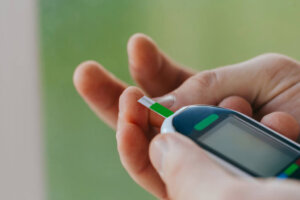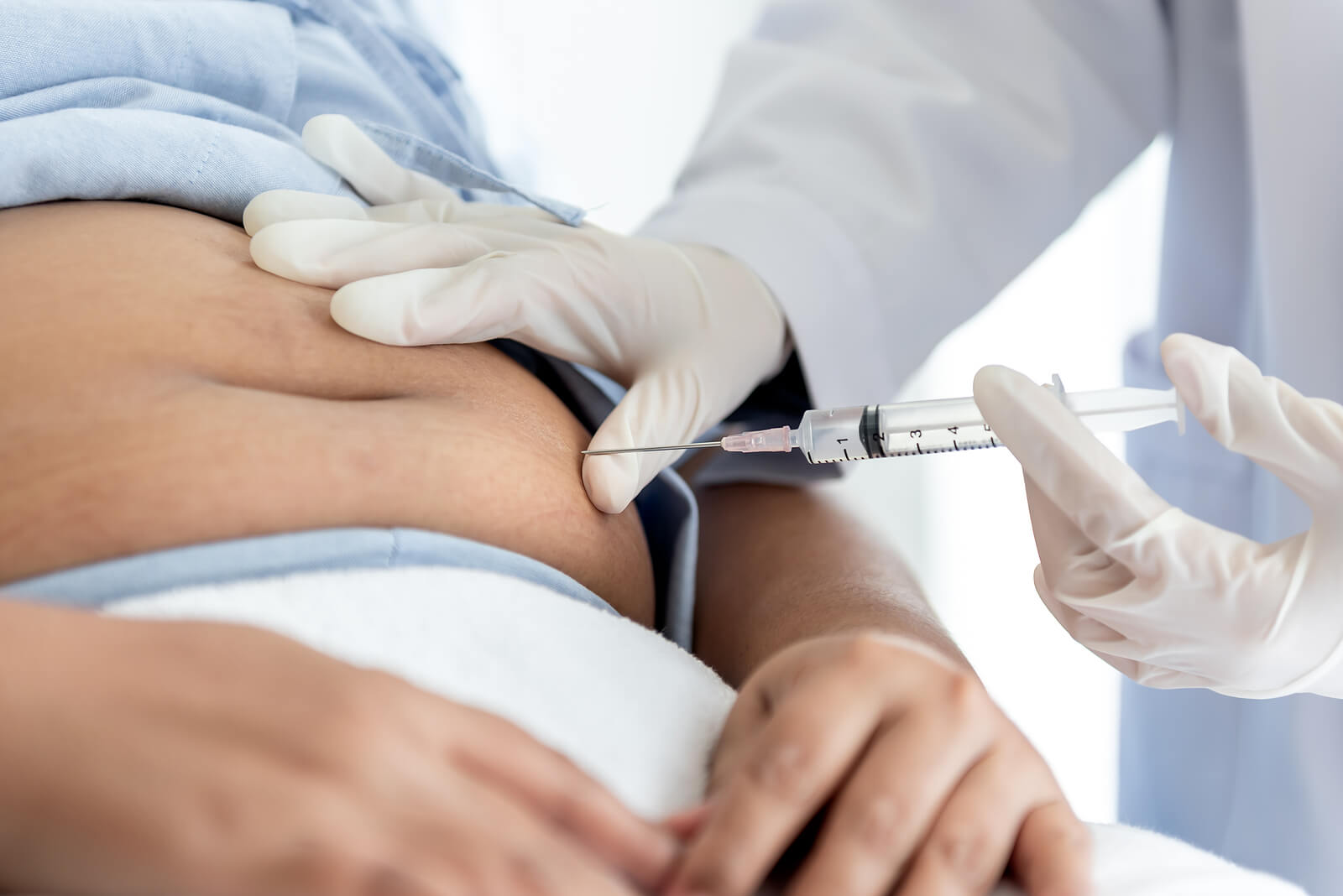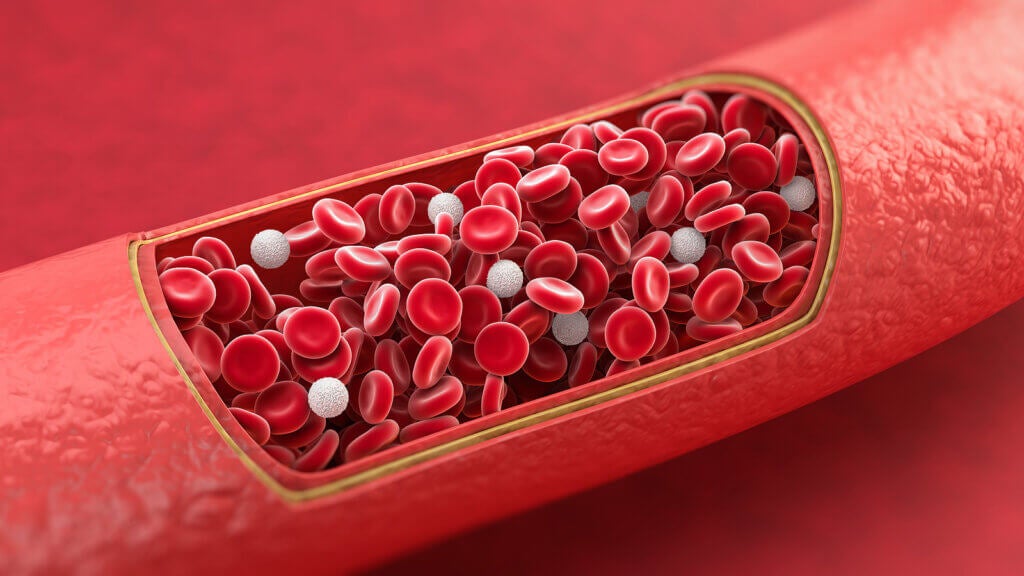Differences Between Insulin and Glucagon

The pancreas is a gland located in the abdomen, which is capable of releasing hormones to both the circulatory system and the gastrointestinal tract. The main hormones released by the pancreas into the bloodstream are insulin and glucagon. The differences between insulin and glucagon can be confusing for some people, so we’ll talk a little more about them.
Multiple studies affirm that the delicate balance between insulin and glucagon is responsible for maintaining normal blood glucose levels. In this way, changes in the levels of any of these hormones can generate the appearance of severe pathologies.
What is insulin?

Before talking about the differences between insulin and glucagon, it’s important to study both hormones separately. Insulin is a polypeptide hormone synthesized in the beta cells of the pancreas. The main function of this substance is to reduce glucose levels in the blood, thereby increasing its entry into cells.
Insulin will bind to specific receptors in various organs after its release, increasing glucose uptake. Glucose will be used as an energy source, so that the cells fulfill their metabolic functions.
Problems with this hormone are related to the different types of diabetes mellitus. Type 1 diabetes is characterized by the inability of the pancreas to synthesize insulin. For its part, type 2 diabetes is produced by resistance to the effect of the hormone, which can cause a progressive decrease in its production.
What is glucagon?
The other hormone responsible for maintaining glycemia in physiological values is glucagon. It’s a hormone with a protein structure produced in the alpha cells of the pancreatic islets. Glucagon has the opposite effect to insulin, so its main function is to increase blood glucose levels.
This hormone’s main area of action is the liver, where it will stimulate a process called glycogenolysis, that is, the breakdown of glycogen. Glucagon will also stimulate glucose synthesis in the liver through various other compounds such as fatty acids and amino acids.
Hypoglycemia is one of the main responsible for glucagon release, although this can occur from multiple stimuli. In addition, the exogenous administration of this hormone is useful to reverse the hypoglycemia produced by the treatment for diabetes.
4 differences between insulin and glucagon
Insulin and glucagon are antagonistic hormones, which means that they both have the opposite effect on the body. However, the balance between both substances is essential in order to maintain blood glucose levels at adequate values.
The differences between insulin and glucagon are very obvious, so by studying them separately it’s possible to identify the most important ones. However, below we’ll mention the 4 main differences between these two compounds.
1. Area of production
The pancreatic structure where both insulin and glucagon are synthesized is called the islet of Langerhans or pancreatic islet. These structures have 4 different types of cells (alpha, beta, delta and PP), each of which will synthesize different substances. Multiple studies show that beta cells are the most abundant and represent 70% of the islet.
One of the main differences between insulin and glucagon is the cells where they’re produced. Insulin is synthesized in the beta cells of the pancreas, while glucagon makes it in beta cells. A different production area ensures that both hormones differ in structure and perform their respective functions.
2. Effects on the body
Both pancreatic hormones are necessary to maintain blood glucose levels, even though their actions are opposite. Insulin is a hypoglycemic hormone, that is, it will try to lower blood glucose if necessary.
This hormone will bind to various specific receptors called GLUT, which are found in different organs. The binding of insulin to the receptors will generate conformational changes in tissue cells, which will increase the influx of glucose. Insulin will also increase glucose stores in the liver by increasing glycogen synthesis.
For its part, glucagon is a hyperglycemic hormone, which means that it seeks to increase the concentration of glucose in the blood. Glucagon acts mainly in the liver, where it will stimulate the synthesis of sugars and the breakdown of glycogen. All the glucose released by the liver will be expelled into the bloodstream to be used by the cells.
Glucagon also generates other effects in the body such as the uptake of amino acids and the breakdown of fatty tissue. In addition, it increases the production of certain compounds in the liver called ketone bodies.
3. Incentives for their release

All hormones have factors that stimulate or inhibit their release so that a balance can exist in the body. The stimuli that regulate the release of insulin and glucagon also allow the two substances to be differentiated from each other.
Insulin secretion is stimulated by multiple substances called secretagogues. However, studies establish that the increase in glucose levels is the main insulin-releasing stimulus. For its part, the decrease in release appears as a result of hypoglycemia, fasting, and the action of somatostatin.
Glucagon also has various stimuli for its release, the main one being the decrease in blood glucose concentration. Fasting also increases glucagon release, as it will seek to increase glucose levels to provide energy for cells.
Being antagonistic hormones, most of the factors that increase insulin release decrease glucagon release. In this sense, the release is inhibited by the increase in fatty acids, amino acids or intestinal hormones. The action of insulin and somatostatin also have an inhibitory effect.
4. Associated pathologies and therapeutic uses
Variations in insulin and glucagon levels can provoke the appearance of hypo or hyperglycemic states, which are associated with different pathologies. The decrease in insulin production is directly related to diabetes mellitus. For its part, its increase is related to prediabetes, a state prior to type 2 diabetes.
The increase in glucagon levels could generate a state of hyperglycemia, which can promote the development of diabetes. In addition, the decrease in its release will generate hypoglycemia, so that the cells will not hathe ve energy to carry out their basic functions.
The exogenous administration of these substances is also useful in the treatment of multiple pathologies. There are different types of insulin, which are used in patients with type 1 diabetes to maintain high glycemic control. On the other hand, many drugs can generate a transient state of hypoglycemia, which can be counteracted with the administration of glucagon.
Two very different but necessary hormones
Insulin and glucagon are one of the most important hormones synthesized in the pancreas due to their effects on blood glucose. The structural differences between insulin and glucagon allow these compounds to have different actions, making it possible to maintain the desired balance.
The pancreas is a gland located in the abdomen, which is capable of releasing hormones to both the circulatory system and the gastrointestinal tract. The main hormones released by the pancreas into the bloodstream are insulin and glucagon. The differences between insulin and glucagon can be confusing for some people, so we’ll talk a little more about them.
Multiple studies affirm that the delicate balance between insulin and glucagon is responsible for maintaining normal blood glucose levels. In this way, changes in the levels of any of these hormones can generate the appearance of severe pathologies.
What is insulin?

Before talking about the differences between insulin and glucagon, it’s important to study both hormones separately. Insulin is a polypeptide hormone synthesized in the beta cells of the pancreas. The main function of this substance is to reduce glucose levels in the blood, thereby increasing its entry into cells.
Insulin will bind to specific receptors in various organs after its release, increasing glucose uptake. Glucose will be used as an energy source, so that the cells fulfill their metabolic functions.
Problems with this hormone are related to the different types of diabetes mellitus. Type 1 diabetes is characterized by the inability of the pancreas to synthesize insulin. For its part, type 2 diabetes is produced by resistance to the effect of the hormone, which can cause a progressive decrease in its production.
What is glucagon?
The other hormone responsible for maintaining glycemia in physiological values is glucagon. It’s a hormone with a protein structure produced in the alpha cells of the pancreatic islets. Glucagon has the opposite effect to insulin, so its main function is to increase blood glucose levels.
This hormone’s main area of action is the liver, where it will stimulate a process called glycogenolysis, that is, the breakdown of glycogen. Glucagon will also stimulate glucose synthesis in the liver through various other compounds such as fatty acids and amino acids.
Hypoglycemia is one of the main responsible for glucagon release, although this can occur from multiple stimuli. In addition, the exogenous administration of this hormone is useful to reverse the hypoglycemia produced by the treatment for diabetes.
4 differences between insulin and glucagon
Insulin and glucagon are antagonistic hormones, which means that they both have the opposite effect on the body. However, the balance between both substances is essential in order to maintain blood glucose levels at adequate values.
The differences between insulin and glucagon are very obvious, so by studying them separately it’s possible to identify the most important ones. However, below we’ll mention the 4 main differences between these two compounds.
1. Area of production
The pancreatic structure where both insulin and glucagon are synthesized is called the islet of Langerhans or pancreatic islet. These structures have 4 different types of cells (alpha, beta, delta and PP), each of which will synthesize different substances. Multiple studies show that beta cells are the most abundant and represent 70% of the islet.
One of the main differences between insulin and glucagon is the cells where they’re produced. Insulin is synthesized in the beta cells of the pancreas, while glucagon makes it in beta cells. A different production area ensures that both hormones differ in structure and perform their respective functions.
2. Effects on the body
Both pancreatic hormones are necessary to maintain blood glucose levels, even though their actions are opposite. Insulin is a hypoglycemic hormone, that is, it will try to lower blood glucose if necessary.
This hormone will bind to various specific receptors called GLUT, which are found in different organs. The binding of insulin to the receptors will generate conformational changes in tissue cells, which will increase the influx of glucose. Insulin will also increase glucose stores in the liver by increasing glycogen synthesis.
For its part, glucagon is a hyperglycemic hormone, which means that it seeks to increase the concentration of glucose in the blood. Glucagon acts mainly in the liver, where it will stimulate the synthesis of sugars and the breakdown of glycogen. All the glucose released by the liver will be expelled into the bloodstream to be used by the cells.
Glucagon also generates other effects in the body such as the uptake of amino acids and the breakdown of fatty tissue. In addition, it increases the production of certain compounds in the liver called ketone bodies.
3. Incentives for their release

All hormones have factors that stimulate or inhibit their release so that a balance can exist in the body. The stimuli that regulate the release of insulin and glucagon also allow the two substances to be differentiated from each other.
Insulin secretion is stimulated by multiple substances called secretagogues. However, studies establish that the increase in glucose levels is the main insulin-releasing stimulus. For its part, the decrease in release appears as a result of hypoglycemia, fasting, and the action of somatostatin.
Glucagon also has various stimuli for its release, the main one being the decrease in blood glucose concentration. Fasting also increases glucagon release, as it will seek to increase glucose levels to provide energy for cells.
Being antagonistic hormones, most of the factors that increase insulin release decrease glucagon release. In this sense, the release is inhibited by the increase in fatty acids, amino acids or intestinal hormones. The action of insulin and somatostatin also have an inhibitory effect.
4. Associated pathologies and therapeutic uses
Variations in insulin and glucagon levels can provoke the appearance of hypo or hyperglycemic states, which are associated with different pathologies. The decrease in insulin production is directly related to diabetes mellitus. For its part, its increase is related to prediabetes, a state prior to type 2 diabetes.
The increase in glucagon levels could generate a state of hyperglycemia, which can promote the development of diabetes. In addition, the decrease in its release will generate hypoglycemia, so that the cells will not hathe ve energy to carry out their basic functions.
The exogenous administration of these substances is also useful in the treatment of multiple pathologies. There are different types of insulin, which are used in patients with type 1 diabetes to maintain high glycemic control. On the other hand, many drugs can generate a transient state of hypoglycemia, which can be counteracted with the administration of glucagon.
Two very different but necessary hormones
Insulin and glucagon are one of the most important hormones synthesized in the pancreas due to their effects on blood glucose. The structural differences between insulin and glucagon allow these compounds to have different actions, making it possible to maintain the desired balance.
- Lima-Martínez M, Betancourt L, Bermúdez A. Glucagón: ¿un simple espectador o un jugador clave en la fisiopatología de la diabetes?. Avances en Diabetología. 2011;27(5):160-167.
- Olvera G, Leo A, Hernández M. Páncreas y células beta: mecanismos de diferenciación, morfogénesis y especificación celular endocrina. ¿Regeneración?. Bol Med Hosp Infant Mex. 2008; (25): 306-324.
- Leyva M, Rodríguez Y, Rodríguez R, Niño S. Mecanismos moleculares de la secreción de insulina. Correo Científico Médico (CCM) 2020; 24(2):782-798.
- Grubelnik V, Zmazek J, Markovič R, Gosak M, Marhl M. Modelling of energy-driven switch for glucagon and insulin secretion. J Theor Biol. 2020 May 21;493:110213.
- Müller TD, Habegger K. Revisiting the Pharmacological Value of Glucagon: An Editorial for the Special Issue “The Biology and Pharmacology of Glucagon”. Int J Mol Sci. 2020 Jan 8;21(2):383.
- Mayer JP, Zhang F, DiMarchi RD. Insulin structure and function. Biopolymers. 2007;88(5):687-713.
Este texto se ofrece únicamente con propósitos informativos y no reemplaza la consulta con un profesional. Ante dudas, consulta a tu especialista.







